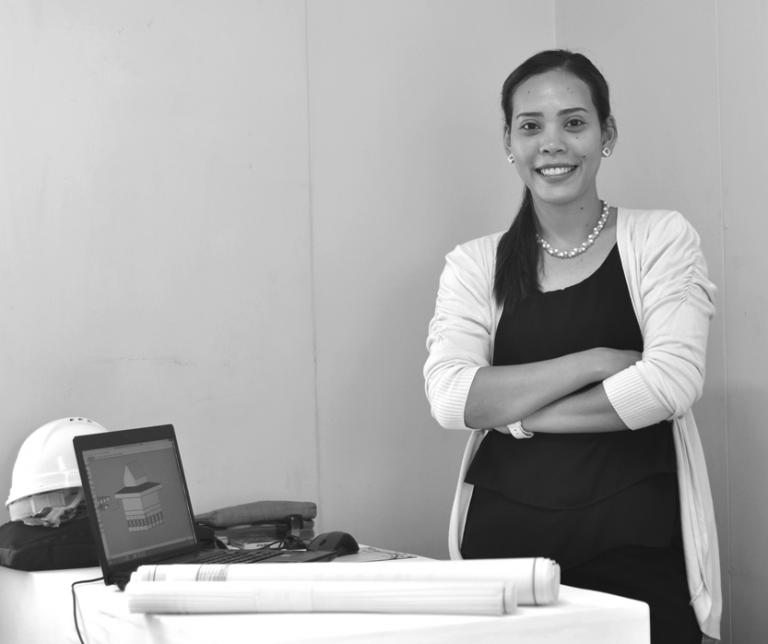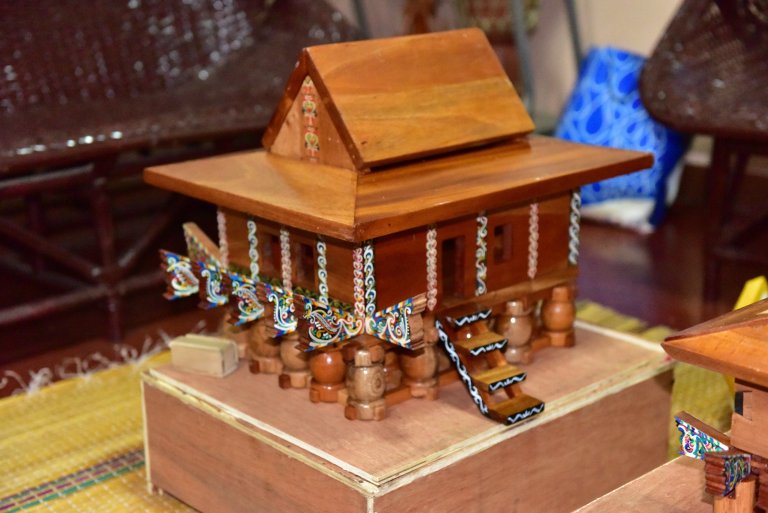by Andre DP Encarnacion, UP MPRO
UP alumna Gloryrose Dy-Metilla and her friends are on a mission to give indigenous Mindanao architecture its rightful place in the public eye.
“It’s dying,” said Gloryrose Dy-Metilla. A deep sense of urgency ran through the voice of the professional architect and UP alumna, as if she were referring to a friend about to be taken before his time.
Her subject, however, was no single person but a time-honored way of being and doing. Dy-Metilla observed how traditional Mindanao architecture and design were beginning to disappear, even within tribal communities themselves. That fact was not lost on her co-founders at the Swito Corporation (swito: a Bisaya term that means “wise guy”—a Davao-based social innovation hub where Dy-Metilla joins her sister Glorypearl Dy and fellow alumni Marben Jan Picar and Angely Chi as Chief of Design and Innovation.

It all began when Gloryrose and her colleagues began holding digital storytelling workshops among Mindanao’s different ethnolinguistic groups. The group had been collecting interesting, personal narratives from members of their far-flung villages for a few years when the architect in Gloryrose could not help but ask: “Where are all the traditional houses?”
As it turned out, in spite of the otherwise strong pride of place among residents that they observed, many of the island’s indigenous peoples were slowly moving away from their own traditional architecture. This, as Gloryrose saw it, was part of a much bigger problem—the lack of a general consciousness of even the existence of diverse indigenous designs all over the country.
“We mostly just know about our bahay na bato and our bahay kubo,” said Gloryrose, who only gained a full-fledged appreciation for that diversity herself as an Architecture student in UP Mindanao. “I think the reason why it’s dying is that it was never really promoted anywhere. People never really got to know about it”.
Pooling together their brains and resources in 2013, Gloryrose Dy-Metilla and her colleagues decided to do something to change that.
Empowering communities
That decision led to the establishment of Switodesigns, Inc., a multidisciplinary design studio based in Davao City that seeks to promote traditional architecture, Mindanaoan cultural identity, and participatory practices in design. To its founders, the roots of the company in the act of storytelling is self-evident. What they hope to do is to provide the “tangible structures” that house the lived experiences that the people of Mindanao seek to share.
One major aspect of the work is helping indigenous communities to remember and restore their own communities. The process begins with the team visiting and holding workshops in a specific location. To take a recent example, the Switodesigns team led by Gloryrose and principal architect Henna Dazo gathered community members of the Ata-Manobo tribe in Davao to engage in a process of “remembering” and a joint re-creation in miniature of the tribe’s designs.
This process is essential, Gloryrose said, because many of the peoples they visit have no tribal community to speak of at all due to armed conflict or natural disasters. The process, they say, guides both community members and Switodesigns to construct tribal villages in the communities’ ancestral domains. Through the process of remembering, Dy-Metilla considers both process and product to be of indigenous ownership. “We are just here to facilitate the remembrance of what they had almost forgotten.”
In the case of the Ata, the centerpiece project of the cooperation is the building of their Panuluanan, or “school of living traditions.” The school is where members of the Ata community engage in “cultural remembering”. It is where an indigenous craft expert in disciplines, like weaving or dance, can impart their knowledge to younger generations. The construction of this and other structures in the cultural village are completely IP-led, with labor and building materials provided by community members themselves.
The second aspect of Switodesigns’ mission involves spreading awareness of Mindanao’s traditional architecture through their clients and projects. “We suggest indigenous designs to our local clients, because we don’t just want to help communities without educating the clients themselves,” Gloryrose said. “We want them to appreciate that this is from Mindanao, and that we are promoters and advocates of Mindanao.”

The greenest ever
Recently, the use of indigenous designs and elements has been catching on among the company’s non-IP clientele—a fact that pleasantly surprises Dy-Metilla herself. “We found that people really want to know about and want to have these kinds of structures.”
“When we talk to people, they ask us: why is it that when we go to Thailand, we get to see Thailand [architecture] immediately? When we go to Cambodia, we see Cambodia. Why can’t we have this in Mindanao?”
One practical reason for the rising popularity of Switodesigns’ structures is the innate suitability of indigenous designs to Philippine climate and geography. “It’s the greenest we can ever have,” Dy-Metilla remarked proudly. The ridged bamboo and rattan roofs of the Maranao torogan, for instance, offers the kind of cool air flow closely associated with “tropical designs” currently in vogue.
Indigenous designs also offer not only comfort but the potential to save lives. The exceptionally long eaves generally found in indigenous roofs and the awning windows protect residents from the ravages of the winds and rains. Moreover, structures like the torogan are very earthquake- and flood-resistant. “We all know they said the Japanese introduced the [earthquake-resistance] concept to us,” she said. “But it was already being used by the Maranaos.”
Gloryrose and her colleagues believe that more than any single element, the innate empathy that pervades and inspires indigenous designs makes them a true source of Philippine pride on the world stage. “Empathy for self, empathy for nature, and empathy for the people around you. If you can make a framework for what Mindanao architecture is, it includes all of these.”
3D puzzles
Even with a string of recent successes, Gloryrose and her friends from Switocorp are not resting on their laurels. Just last year, the group launched Balay Balay 3D Architecture, their newest initiative to promote Mindanao design. Inspired by Dy-Metilla’s passion to spread the appreciation of Mindanao’s indigenous structures among adults, the group is hoping to do the same with children by crafting 3D puzzles modeled after native houses and other traditional spaces.
“What can represent our country as a structure?” asked Marben Jan Picar, one of Switocorp’s co-founders. Shaken by the fact that they could find no other structure besides the nipa hut that most fit the bill for most people, the group launched the project with the aim to make Mindanao architecture as ingrained in the consciousness of Filipino children as Legos and yoyos.
Each of Balay Balay’s puzzles goes through a long process of validation before being made. Consultations are done with indigenous peoples, academics, and NGOs before the month-long process of carving and painting begins.
Their work has caught the eye not only of children and their families who view their works, but also of indigenous peoples who are struck with nostalgia when they see the pieces. Gloryrose recalls a number of Maranao visitors from Lanao who saw their torogan model and said that they would work to rehabilitate their own, which had become dilapidated over the years.
“People who visit our exhibits would say, ‘That’s where we used to play, in-between the torogan posts. And that was like 20 or so years ago’.”

Whether it involves reigniting the spark of nationalism in their fellow Mindanaoans or helping young Filipinos gain insight into their rich and complex heritage, Gloryrose Dy-Metilla hopes that their efforts open the door for more people to appreciate Mindanao and the rest of the country better. “I think for us Filipinos,” she explained, “we are instilled early on with the idea that everything foreign is good. We yearn for that green card, for our family members to finally get to the US, and things like that.
They just don’t know enough about our culture. And if there aren’t enough people who will show them, how will they find out?”
Source: https://www.up.edu.ph/index.php/the-south-remembers
